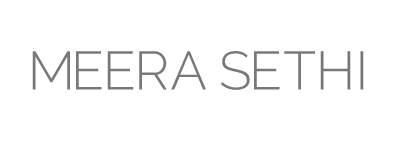I was thrilled to have participated in a seven-week artist-in-residence program at Fondation Fiminco in Paris, France from April to June 2025. Working in a shared studio with several other artists while also exploring the vast collections of art in the city was an opportunity to deepen my practice in a new environment.
Upping The Aunty 2 Colouring Book is here!
After the hugely popular Upping The Aunty Colouring Book, I have created 30 NEW drawings for an Upping The Aunty 2! You can learn more about the book and purchase your copy here.
Conversation with Sage Paul at Another Story
Join Sage Paul and I in conversation at the launch of Upping the Aunty 2 The Colouring Book at Another Story Bookshop. The evening will feature a lively question and answer format across South Asian and Indigenous solidarities that will have you challenged, inspired, and laughing!
Be with us as we battle it out—together—to explore and celebrate all things aunty/auntie!
Sage Paul is an urban Denesuliné tskwe based in Toronto and a member of English River First Nation. Sage is an award-winning artist & designer and a recognized leader of Indigenous fashion, craft and textiles. Her work centres family, sovereignty and resistance for balance. Sage is also founding collective member and Artistic Director of Indigenous Fashion Week Toronto.
A Brief History of Wear: a mid-career solo retrospective
September 21 2024 - January 5, 2025 | Varley Art Gallery of Markham in Ontario, Canada.
This mid-career retrospective brings together, for the first time, a diverse collection of work by Meera Sethi, including painting, drawing, collage, soft sculpture, performance, and illustration. Spanning fifteen years, A Brief History of Wear offers a comprehensive look at Sethi’s creative evolution and how she challenges conventional notions of identity and representation. In doing so, she honours the profound emotional, physical, and intellectual labour of racialized people.
As seen in Articles of Clothing, New Clothing Care Symbols, and Cotton Exchange, Sethi’s multidisciplinary approach examines the power dynamics of cloth—its creation, use, and eventual discarding. In contrast to the ideals of fast fashion, Sethi’s practice embraces a slow and thoughtful approach, allowing space for questioning, documenting, and meaning-making to shape the creative process.
Sethi’s inventive use of materials highlights the political and material dimensions of South Asian experiences over time. Large paintings on paper and canvas, such as those from the Upping the Aunty and Firangi Rang Barangi series, demonstrate a fearless use of colour and bold patterning. Other works incorporate collage techniques, visible stitching, and a range of materials such as plastic, paper, and hair. In Outerwhere, the winter coat becomes a canvas upon which the artist integrates these elements, creating both personal and broader cultural narratives in the process. These material strategies allow Sethi to explore how we understand and value the self, the body, and clothing within specific cultural contexts.
As a trailblazer in the development of a queer diasporic aesthetic, Sethi’s practice continually seeks to unsettle itself, posing important questions about displacement, desire, and resilience. In Begum, Sethi’s figures embrace play and excess to challenge dominant gender ideologies. Here, queerness and fashion are understood and employed as strategies of resistance against conformity.
In all her work, Sethi’s artistry, with its meticulous detail, invites us to appreciate its beauty while reflecting on the healing potential of combining intellect, skill, and emotion, mind, hand, and heart.
2024 Pierre Lassonde Artist-in-Residence
I was selected to be the 2024 Pierre Lassonde Artist-in-Residence at the school of fine arts at Mount Allison University, Sackville, New Brunswick, Canada. I stayed in Sackville from January to July 2024. During this time I developed a new body of work I call “draweaves” using adhesive tape-an innovative medium-and an invented method. These adhesive tape draweaves exist somewhere between drawings and weavings as exist as standalone works and as works in space on walls and floors.
During my residency, I was curious what adhesive tape could and couldn’t do. Could tape being such a modern, industrial material bring a new understanding forward of textile crafts that have been meticulously developed over hundreds, even thousands of years? Could I explore both representation and abstraction with tape inspired by both Indian textile and the abstract geometry of weavers like Anni Albers? I developed several methods of working with tape and I continue to take this exploration forward now that the residency is complete.
